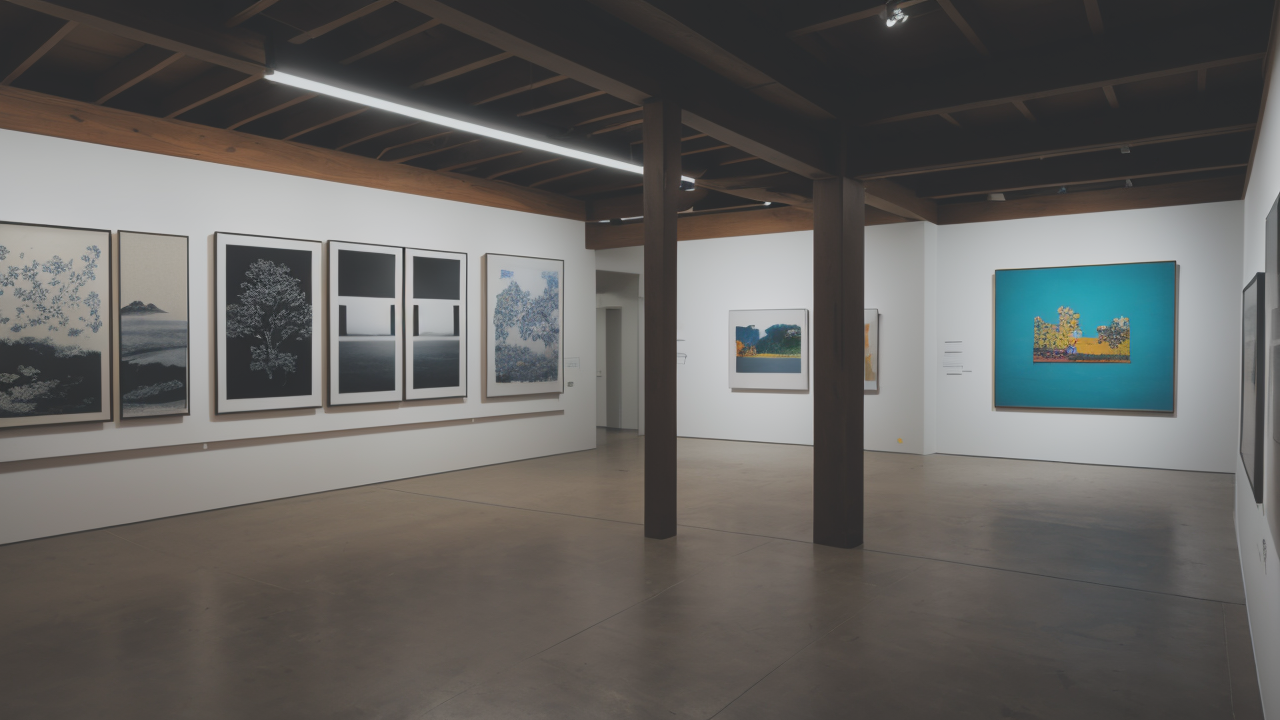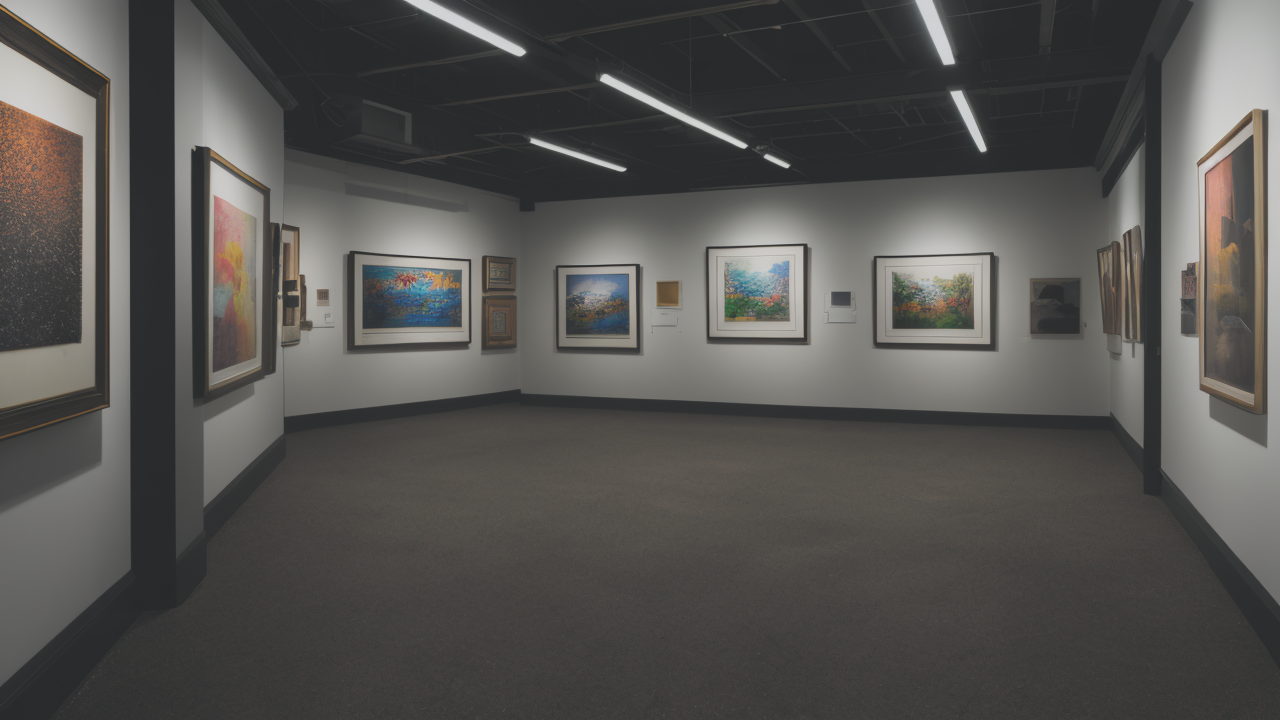
Unveiling the Influence of Japanese Aesthetics on Modern Abstract Shape Art
Understanding Wabi-Sabi: A Brief History and Its Influence on Modern Art
The Origins of Wabi-Sabi and Its Role in Japanese Culture
Wabi-sabi is a Japanese concept that finds beauty in imperfection and simplicity. It has roots in Zen Buddhism and tea ceremonies. The term "wabi" means simplicity and "sabi" refers to the beauty of age and wear.

In Japanese culture, wabi-sabi influences art, design, and daily life. It values:
- Simplicity in form
- Natural materials
- Asymmetry
- Roughness or irregularity
- Appreciation of the impermanent
This philosophy shapes Japanese gardens, pottery, and architecture. It encourages mindfulness and acceptance of life's imperfections. Wabi-sabi teaches us to find beauty in the modest and humble.
How Wabi-Sabi Principles Have Reshaped Contemporary Aesthetics
Wabi-sabi has greatly influenced modern art and design globally. Its principles align with minimalism and eco-friendly trends. Artists now embrace:
- Organic forms and textures
- Muted color palettes
- Handcrafted items with visible flaws
- Use of recycled or natural materials
- Designs that show the effects of time
In interior design, wabi-sabi inspires spaces that feel lived-in and authentic. It counters the sleek, mass-produced aesthetic of modernism. This approach encourages a more mindful way of creating and appreciating art.
Contemporary artists use wabi-sabi to explore themes of time, nature, and human experience. This shift reflects a growing desire for authenticity in our fast-paced, digital world.
Wabi-Sabi Artists and Their Contributions to Contemporary Culture
Key Artists Incorporating Wabi-Sabi in Their Works
Several artists have gained recognition for their wabi-sabi inspired creations:

- Axel Vervoordt: Belgian designer known for minimalist interiors with wabi-sabi elements.
- Jun Kaneko: Japanese-American sculptor creating large-scale ceramics with organic forms.
- Valerie Hegarty: American artist whose decaying sculptures embody wabi-sabi's transience theme.
- Kintsugi artists: Those who repair broken pottery with gold, celebrating imperfections.
- Hiroshi Sugimoto: Japanese photographer capturing time and emptiness in black and white images.
These artists blend traditional Japanese aesthetics with contemporary techniques. They create works that challenge our ideas of beauty and perfection in art. Their pieces often show the marks of time and human touch.
Many of these artists work with natural materials like clay, wood, and stone. They embrace imperfections and asymmetry in their creations. Their work invites viewers to slow down and appreciate subtle details.
Exhibitions and Galleries Promoting Wabi-Sabi Art
Many art institutions have embraced wabi-sabi aesthetics in recent years:
- The Noguchi Museum in New York regularly features wabi-sabi inspired sculptures.
- The Los Angeles County Museum of Art has hosted exhibitions on Japanese aesthetics.
- Smaller galleries like Cavin-Morris in New York specialize in wabi-sabi influenced art.
- The Freer Gallery of Art in Washington D.C. showcases Japanese ceramics and paintings.
- The Portland Japanese Garden hosts exhibitions that blend nature and wabi-sabi art.
These exhibitions introduce wider audiences to wabi-sabi principles. They show how ancient Japanese philosophy can inspire modern creativity. Many feature interactive elements that let visitors experience wabi-sabi firsthand.
Art fairs like Design Miami have also started featuring wabi-sabi inspired works. This exposure helps integrate these aesthetics into mainstream art markets. It also encourages more artists to explore wabi-sabi in their own work.
The Impact of Wabi-Sabi Art on the U.S. Market and Collectors
Wabi-Sabi Art Pieces in U.S. Collections: Trends and Significance
Wabi-sabi art has found a growing audience among U.S. collectors. Key trends include:

- Increased demand for handcrafted ceramics and textiles
- Rising interest in minimalist sculptures with natural materials
- Appreciation for art that shows signs of age or wear
- Popularity of Japanese-inspired gardens and landscaping
- Growing market for kintsugi repaired objects
Collectors value wabi-sabi art for its uniqueness and depth. Each piece tells a story through its imperfections. This contrasts with mass-produced decor items that often lack character.
The significance of this trend lies in its cultural impact. It represents a shift towards more mindful consumption and appreciation of craftsmanship. Wabi-sabi art encourages collectors to slow down and find beauty in simplicity.
Many collectors see wabi-sabi art as a form of mindfulness practice. It helps them connect with nature and appreciate the passage of time. This aligns with growing interest in wellness and sustainable living.
Future Prospects: What Wabi-Sabi Art Tells Us About American Art Trends
The rise of wabi-sabi in American art signals several broader trends:
- Growing interest in sustainable and eco-friendly art practices
- Desire for authenticity and connection in a digital age
- Appreciation for cross-cultural influences in art
- Shift towards mindfulness and slow living philosophies
- Rejection of perfectionism in favor of embracing flaws
As these trends continue, we can expect more artists to explore wabi-sabi principles. This may lead to new hybrid art forms blending Eastern and Western aesthetics. We might see more collaborations between Japanese and American artists.
The art market may see increased value placed on imperfect or aged works. Collectors might seek out pieces that embody wabi-sabi's appreciation of transience. This could change how we value and preserve art over time.
In interior design, the wabi-sabi influence could lead to more relaxed, lived-in spaces. This contrasts with the stark minimalism of recent years. We may see more use of natural materials and handcrafted items in home decor.
Overall, wabi-sabi's rise reflects a deeper cultural shift in the U.S. It shows a growing desire for meaning and authenticity in art and daily life. As this trend evolves, it may reshape how Americans view beauty, perfection, and the value of art.


